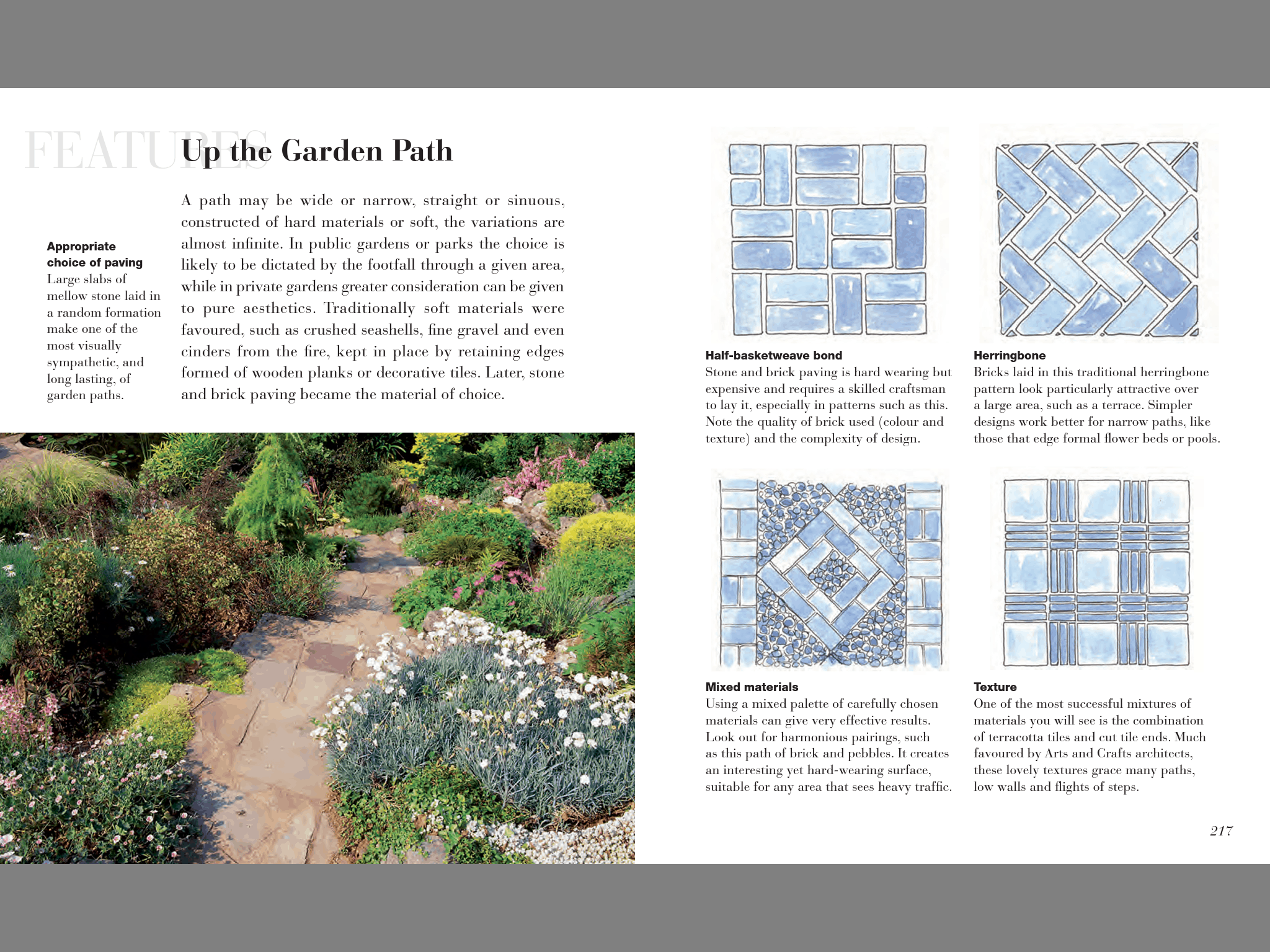This book was suggested to me by the publisher and, as such, I didn’t pay much attention to the back cover introduction – an error on my part! Upon reading it, I realised the book isn’t designed to be an in-depth study of how a garden comes together and how to place it in history but rather a handy guide to take on garden travels. It draws attention to each part a garden may have and explains why it’s there or what the gardener is trying to achieve stylistically. For me, it is a little too superficial with too few photos of the gardens and without conclusions, I’m not quite to do with my head full of threads untied. It’s a three out of five for me, but I can see how others may enjoy its light, conversational tone.
A few of the pages:
From the back cover:
Garden visiting has never been so popular but how many of us really understand what we are looking at when strolling through a beautiful garden? Are we looking at an original landscaped site or a re-creation? Is the planting matter authentic or made up of modern hybrids? Are the steps and terracing in the Italianate style or are they Arts and Crafts? The truth is that most gardens of any age are like a palimpsest: successive generations have changed and influenced the soft and hard fabric of the place over time. Inevitably many of the gardens we wander through today are an amalgam of changing fashions and circumstance. Garden landscapes can plot the rise and fall of a family’s fortunes, record man’s exploratory spirit through the introduction of foreign plant species, and chart the destruction (and regeneration) caused by natural disasters. How to Read Gardens provides you with all the knowledge you needs to tease out the clues that will tell the complete story of a garden’s past. From the grandest estate to the smallest suburban plot, this book will enliven and inform every future garden visit.
I received a complimentary copy of this book from Quarto Publishing Group – Ivy Press through NetGalley. Opinions expressed in this review are completely my own.




